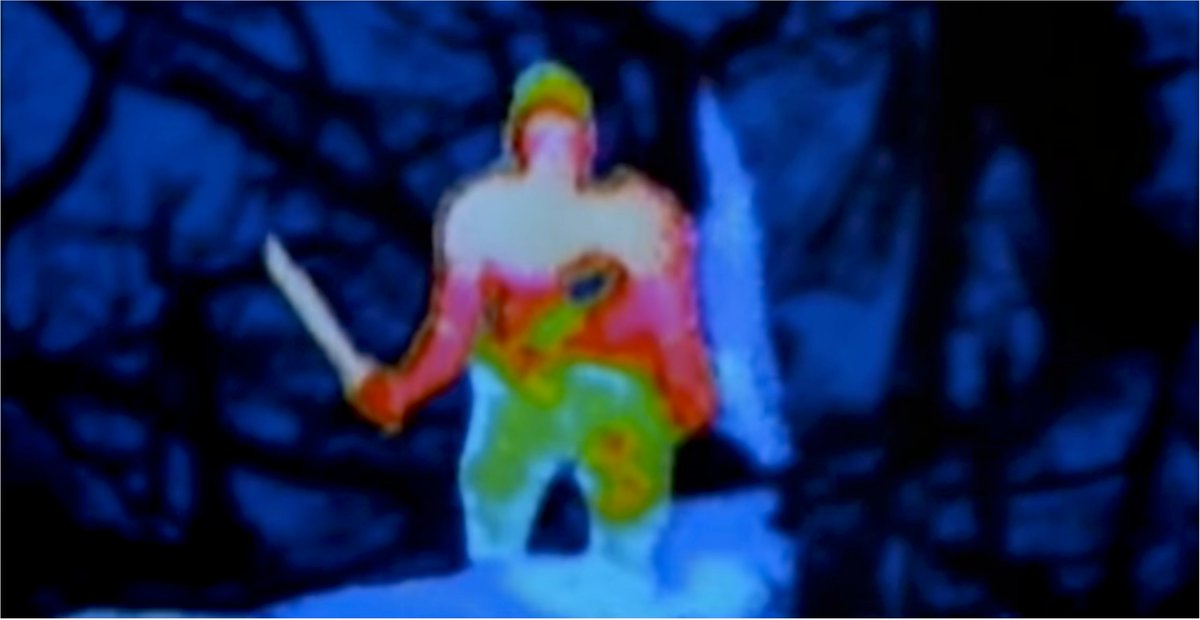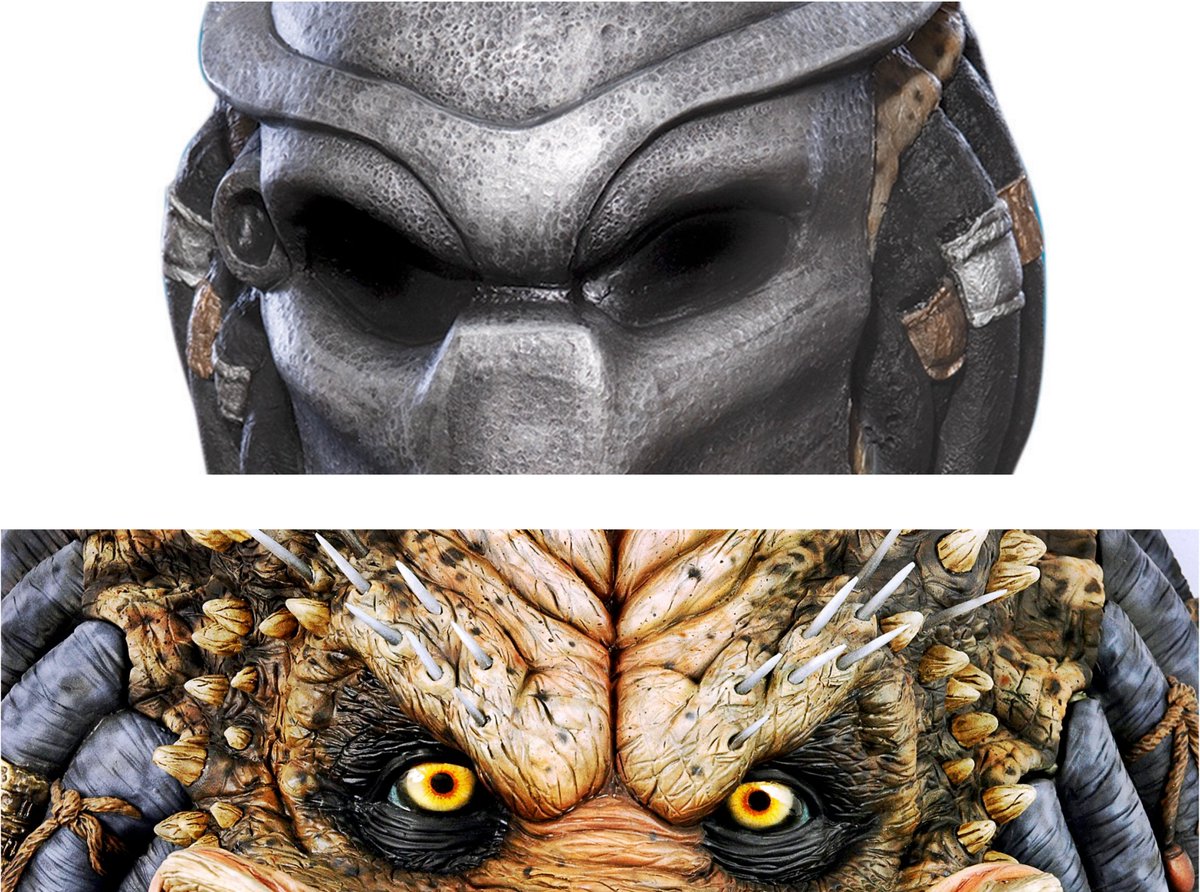Alright, time for more comparative color #visionscience, but this time the species is far less well-researched. On Monday, I& #39;m talking to my S&P students about the visual system of the animal below. <1/n>
In case you don& #39;t know what that thing is that is the PREDATOR. This alien essentially won the 1980& #39;s by being the most ridiculously awesome scary alien I had ever seen by the age of 8 (and I& #39;d seen some stuff by then - trust me). <2/n>
As a grown-up scientist, I also recognize that the Predator provides an opportunity to try making inferences about the visual system of another species given only limited access to its subjective experience. Many have tried other approaches - all have been PREDATORed. <3/n>
Luckily, the original film gives us several glimpses of the Predator& #39;s POV, which I think allows us to draw some important conclusions. First, consider the image below: <4/n>
I argue that from this the Predator appears to be at least a dichromat. There seems to be variation in chroma and intensity, suggesting either that the Predator has at least a 2D color space or is stuck using the #matlab default colormap (and is thus anti-openscience). <5/n>
That looks like crude discrimination abilities, though (the bit depth looks limited). I think this means that the Predator maybe has photoreceptors with limited overlap? Regardless, what range of wavelengths is he sensing? Consider this image that gives him trouble. <6/n>
That image ends up looking dark to Predator vision and does not allow the former Gov. of California to be distinguished from the muddy branches. Why? Probably because of the limited infrared radiation in that pic. The Predator thus mostly sees longer wavelength light. <7/n>
But WAIT! This is all stuff that the Predator sees with his amazing techno-helmet on. Clearly this thing allows him to see a different range of wavelengths - what if he had to look at stuff with his own eyes? <8/n>
Luckily, we get a glimpse of the difference later in the film. After getting clocked by a giant log ( #spoileralert I guess), the Predator loses his helmet and stuff looks like this: <9/n>
Oof-that& #39;s awful. What does it mean? The helmet gives infrared, so he doesn& #39;t see that with his own eyes. He also mustn& #39;t see much of our visible spectrum or else this would look better (and less red). The answer? The Predator mostly sees SHORTER wavelengths, into the UV. <10/n>
This also explains another awesome Predator feature - the glowing blood! Isn& #39;t this a terrible thing to have if you& #39;re a creature trying to hide from other Predators and prey that would like to track and kill you? <11/n>
Yes, it is - but only on a planet with our light environment. If the Predator& #39;s planet is rich in UV light, the glowing blood is helpful. Biofluorescence like this can result from UV light being absorbed by molecules and being re-emitted as longer wavelength light. <11/n>
This means that a wounded Predator& #39;s blood will be less visible to other Predators without awesome helmets. The UV light that is shining on the blood (and that they could see) is absorbed and re-emitted at a longer wavelength that they don& #39;t detect as readily. <12/n>
In sum - the Predator clearly has a visual system confined largely to short wavelength light, with relatively poor discrimination within that range. As ever, the careful application of reason has led us to new and important conclusions about nature. <end>
Tagging @timmytimmytim because this is definitely finding its way into my textbook.

 Read on Twitter
Read on Twitter







